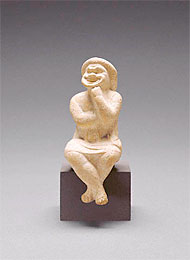 |
||
The Performing Arts in Art curriculum explores works of art in the J. Paul Getty Museum's collection that depict subjects related to music, dance, theater, and storytelling. This interdisciplinary curriculum engages students in diverse topics in the disciplines of visual art, performing arts, history, and language arts. A variety of visual, musical, kinesthetic, and linguistic activities address the multiple ways in which students learn and provide new lenses for exploring historical events, mythological stories, and artistic traditions.
Lessons in this curriculum address such questions as: How have the roles of performing and visual artists within society changed over time? How have musicians, actors, dancers, and storytellers been depicted in works of art, and what do such depictions reveal about the historical eras in which they were made? How do works of art convey the nuances of stories that have been passed down through oral tradition since the time of antiquity? How do visual artists convey movement and drama in their works?
The curriculum covers four themes:
• The Art and Accessibility of Music
• The Art and Ancient Tradition of Storytelling
• The Art and Depiction of Dance
• The Art and Influence of Theater
Each theme is divided into beginning-, intermediate-, and advanced-level activities that act as scaffolds for step-by-step learning. Middle and high school teachers can use less advanced activities to review student understanding of basic principles required for the more complex activities. Beginning-level activities address elementary school standards, intermediate activities address middle school standards, and advanced activities address high school standards. Visual art and drama teachers are encouraged to collaborate when implementing these lessons in order to share resources and expertise.